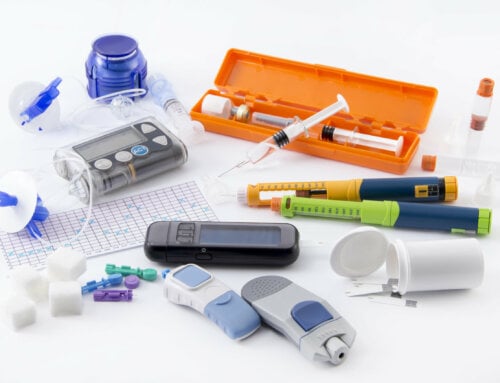The radio stopped playing holiday music, the weather outside is dreary and winter doldrums might start to set in. You may start craving high carbohydrate snacks and think about skipping workouts in poor weather conditions. Learn how to get over your winter diabetes woes and make the most of taking care of yourself during every season of the year.
- Winter woes are real when you have diabetes, but you don’t have to give in to them. Ward off stress by taking time out to enjoy yourself. Read a magazine or watch your favorite television show. Call an old friend you miss talking to. Try breathing exercises or meditation to unwind. Do Tai Chi or Yoga to stretch and relax. Establish a balanced routine and stick to it. Eat proper amounts of carbohydrates for energy. Include vegetables and protein in your diet and avoid snacking on the wrong foods while you lounge around inside. Do eat snacks that are allowed to keep up energy levels. Slow down and remember to take time out for yourself.
- Winter is a time when most people develop dry and itchy skin. It is especially detrimental for people with diabetes to have cracked and open skin that could become infected. To prevent this problem keep your skin clean, dry and use a moisturizer. Drink plenty of water to replenish the fluids in your body. Eat well-balanced meals with lots of vegetables for nutrients. Avoid extreme temperatures such as electric blankets or hot baths than can further dry out your skin. Consider a humidifier to add moisture to the air in your home. Keep your hands warm outside in gloves and your feet cozy in diabetic socks with no irritating seams. Have your feet measured and choose shoes that fit properly. Wear slippers at home to avoid injuries. Wear water proof boots in inclement weather.
- Take extra care of your feet during the winter. Dry skin can lead to cracking, infections and serious foot conditions for people with diabetes. Check your feet each day to make sure there are no sores, cuts, cracking or other irregularities. Use a foot mirror if you have difficulty seeing the bottom of your feet. Wash your feet daily in warm water and gentle soap; do not soak them. Dry your feet completely with a soft towel, then apply lotion to the surface of your feet. Avoid the areas between your toes. Take off your shoes and socks during routine physical exams so your doctor will check your feet. Schedule regular visits with a podiatrist. Keep in mind a podiatrist can help you with issues such as cutting your toenails and calluses even when you do not have an infection. If you decide to cut your own toenails, clip them straight across and use an Emery board to file sharp edges. Use a gentle buffer not a sharp blade to reduce calluses; never cut or scrape off calluses.
- Catching a cold or flu can definitely bring on a case of the winter woes. Talk to your doctor about getting a flu shot in the early fall. Wash your hands often, especially before meals. Keep hand sanitizer handy in case you do not have access to soap and water. Eat well, drink fluids and stay warm to ward off infections. Stay away from people who are sick as colds and flu are often contagious. If you get a cold or flu, stay home and get rest. Talk to your health care team about creating a sick day plan to minimize the stress if you do get ill.
- Keep track of what you eat. Often staying indoors in the winter can lead to habitual snacking. It helps to keep a food journal. Eat three meals and two snacks each day to keep blood sugar levels in check unless you’re on basal/bolus insulin. Stay away from fatty or sugary foods that are often wrongly referred to as “comfort foods”. True comfort foods can include fruit, vegetables, low-fat dairy, lean meat and fish and whole grains. Invest in a diabetes cookbook to learn new ways to prepare nutritious foods to make them even more delicious.
- Remember to store insulin in a suitable location that is not affected by the weather. Insulin should not be stored in extreme hot or cold conditions or be moved from one temperature to another. A cooler is a great option if you are transporting insulin, but never let insulin freeze. Keep open bottles of insulin or pens at room temperature to make the injections more comfortable. Unopened insulin should stay in the refrigerator. Keep insulin and diabetes supplies away from heaters.
- Don’t let inclement weather disrupt your workout routine. Make sure to fit in 30 minutes of exercise, 5 days a week. Get a few exercise DVDs to inspire you on dreary days. Play music and dance around your living room. Burn off calories by cleaning the house or shoveling show. Stand up instead of sitting when you talk on the phone or watch television.
- Some people suffer from seasonal depression. If you can’t shake off the winter woes, these persistent feelings might require professional attention including light therapy. Talk to your doctor or a counselor if you remain sad, fatigued or disinterested in life for more than a couple of weeks.
If you experience winter woes with diabetes, you’re not alone. A few simple lifestyle changes can boost your mood and help you stay healthy. Remember, winter is only temporary and spring will arrive soon!







Leave A Comment